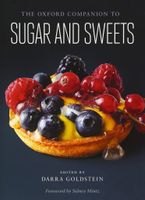Advertisement
Rosh Hashanah and Passover
Published 2015
These connections to initiation and renewal also underlie the central role of honey in the meals for Rosh Hashanah, the Jewish New Year, which commemorates the creation of the world at the beginning of the harvest season. See rosh hashanah. The consumption of sweets during the joyous celebration is already ordained in the Bible (Nehemiah 8.10), and honey cake is one of the most familiar desserts. Moreover, challah, the traditional bread of festive meals, is usually dipped in salt, but during Rosh Hashanah it is dipped in honey. The popular custom of dipping apples in honey, which originated in medieval northern Europe, connects the first fruits of autumn with the themes of sweetness and rebirth. Given the illuminating qualities of honey, this custom may also symbolize the opening of the eyes of the first humans in the Garden of Eden after they tasted the fruit of the tree of knowledge (Genesis 3.7). Ancient rabbinic sources speculated that the forbidden fruit was a fig, grape, or pomegranate, but the ubiquitous Christian identification with the apple may have influenced the medieval Jewish custom (though with a decidedly positive connotation), and apple desserts are common throughout the world during Rosh Hashanah, from European and Middle Eastern strudels, tarts, and compotes to apples cooked in honey and rosewater among Jewish communities in India.


